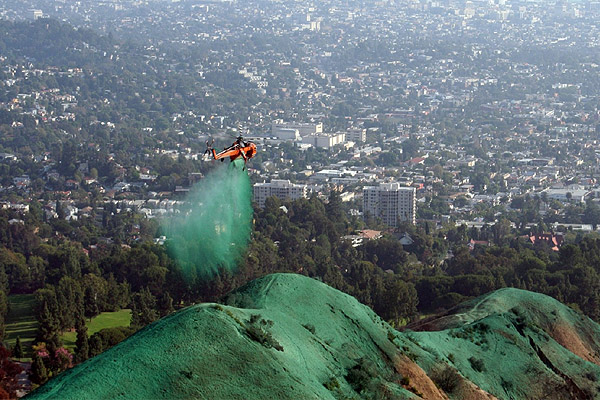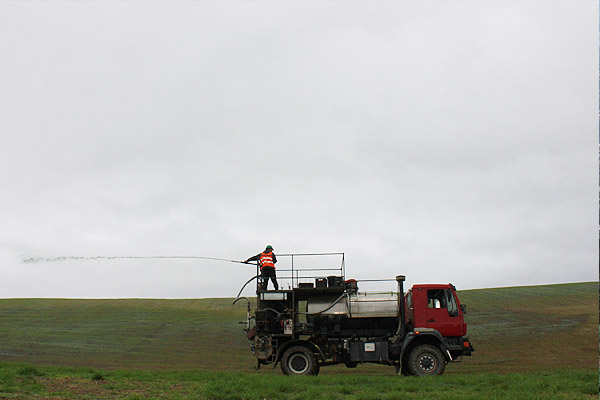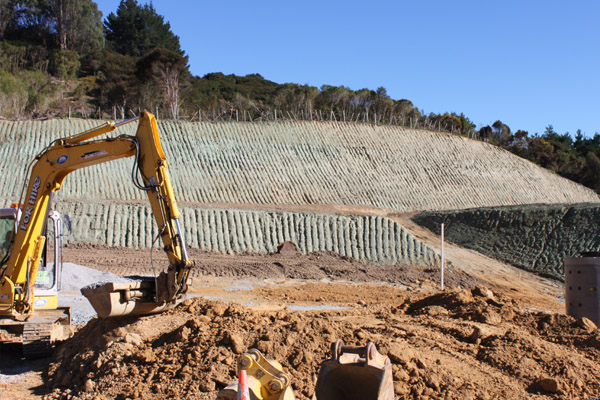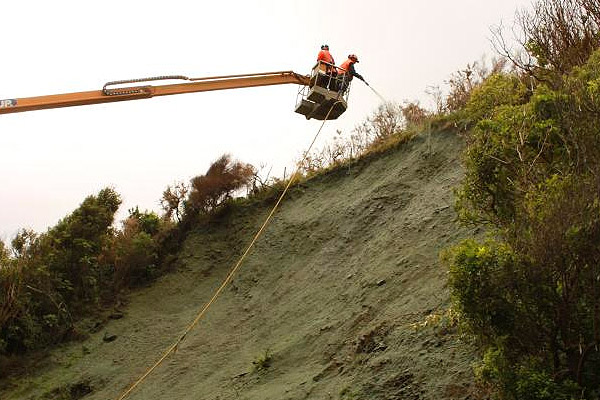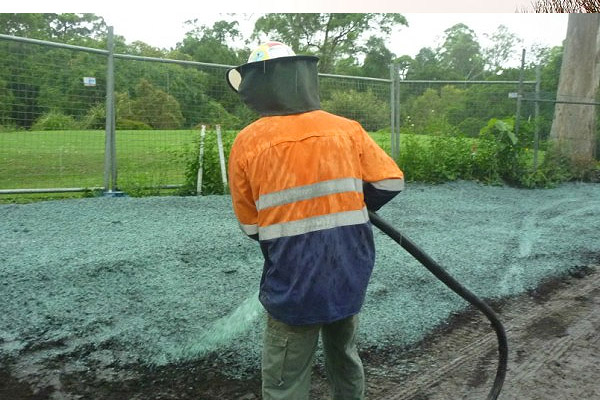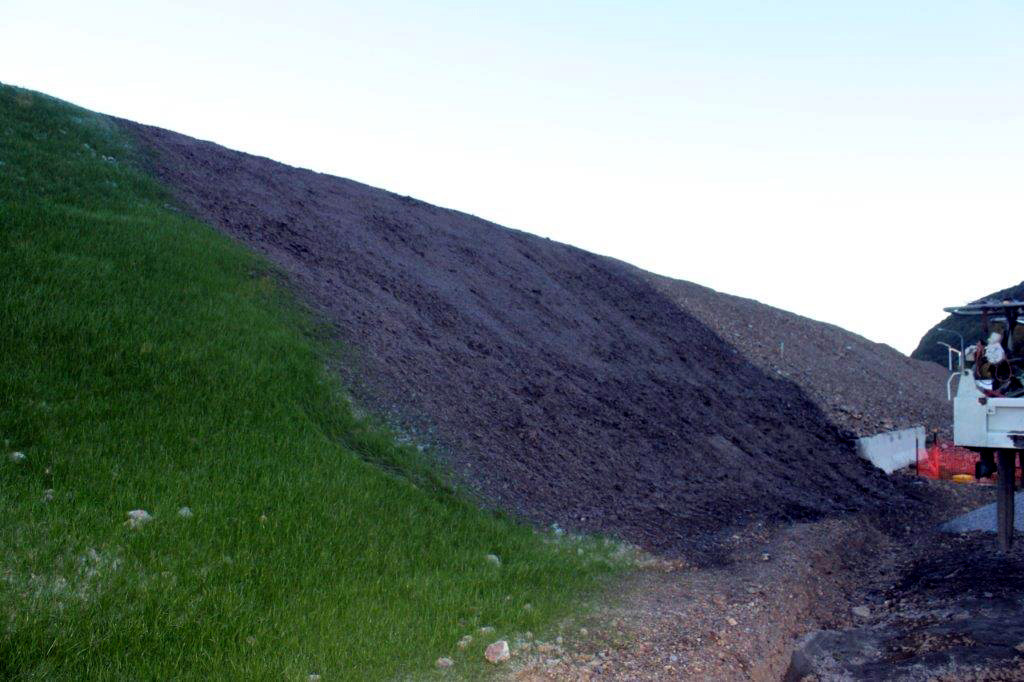Hydromulching
Hydro-mulching sometimes referred to as hydro-seeding, is a grass planting process. The process is fast, efficient, and economical. This grass planting process is usually more effective than conventional seeding and certainly more economical than conventional sodding. The process begins by mixing mulch, seed, fertilizer, and water in the tank of a hydro-mulching machine.
The mixed material is then pumped from the tank and sprayed onto the ground. The material is often referred to as a slurry, much like a soupy batch of green paper-mâché. Once applied to the soil, the material enhances initial growth by providing a microenvironment beneficial to seed germination.
A GRASS PLANTING PROCESS
If the area being planted is smooth and manicured, the resulting grass surface will be smooth and manicured. Golf greens are frequently planted with hydro-mulching resulting in a smooth surface.
Hydro-mulching material is weed-free. However, weed seed is almost always present in the soil, and when the soil gets the moisture and fertilizer from the planting process, weeds usually appear.
THE MULCH MATERIAL
Mulch products are usually produced from recycled paper or raw wood. Paper mulch products are frequently used where lower costs are demanded. Wood mulch products are commonly used on sites where good results are expected.
Most wood mulch is produced with special machinery, resulting in a fibrous product. Some wood mulch is made with a hammer mill process, which results in a product that lacks the erosion controlling the effectiveness of “ wood fiber” A very specific fiber texture is particularly important in achieving an erosion-resistant product.
Wood fiber mulch is usually more difficult to mix and pump than paper mulch material. It is a challenge for the producers to make an effective product that is also easy to mix and pump. Almost all mulches are dyed green for aesthetics. The color also provides a way to visually determine the thickness of the mulch application on the ground. Mulch products are usually packaged in 30 or 40 kg bags.
THE VALUE OF MULCH
Mulch applied to the soil reduces moisture evaporation from the soil. Grass seed needs soil moisture to germinate and grow. Moisture must initially come from either irrigation or rainfall. Once the soil has moisture, mulch helps the seed get the most benefit from that moisture. Poor growth is almost always due to the seed and or the seedlings not getting enough moisture during certain critical times. Soil moisture is absolutely necessary to grow grass.
A good mulch application also provides erosion resistance. Soil erosion caused by flowing water is always a factor. Mulch helps hold soil in place and reduces the possibility that the seeds will be washed away, providing a better chance for establishing a more uniform coverage of grass. Further, when soil erosion is reduced, soil pollution of streams and other bodies of water bodies is reduced. Wood mulch, with its fibrous network in the soil, can have significant benefits in reducing or preventing soil erosion. But the strength of the mulch can be enhanced by using a tackifier. A tackifier is a glue for tying the mulch and soil together.
HYDRO-MULCHING HAS A VARIETY OF USES
New home lawns may be the largest single-defined market for hydro-mulching. Other landscape applications are also significant. Hydro-mulching is being used more and more in new golf course construction. Each of these applications is usually irrigated, and the turf resulting from the application is usually classified as “ fine turf”. Sod Quality Results can be achieved almost every time when appropriate amounts of quality wood mulch and tackifiers are used.
New highway construction always needs new grass planted. The grass is frequently needed on mine sites, and reclamation of mine sites has increased with the recent concerns for the environment. Utility construction areas frequently need grass after pipelines or power lines have been constructed. The list of places for planting grass in these “nonturf quality” areas seems to be endless. Hydro-seeding, utilizing less mulch, is frequently used in these large areas to be more economical. Hydro-seeding can work well on these “non-irrigated” areas if the conditions are not too hot and dry.
THE RESULTS
Warm and moist conditions promote faster seed germination. Seedbed conditions determine growth rates after germination. When all the conditions are favorable, most grasses planted with seed will require mowing and have excellent coverage in less than three weeks. It is possible, under the most ideal conditions, to produce a turf suitable for a football field that can be ready for play in 60 days.
THE DEMAND IS BOOMING
Almost all construction sites require grassing. The primary question ultimately becomes how good and how reliable must the grass planting results be. The results needed will determine if lower costs hydro-seeding is best, or if the site needs to be planted with more reliable hydro-mulching
honcus vel dui.
